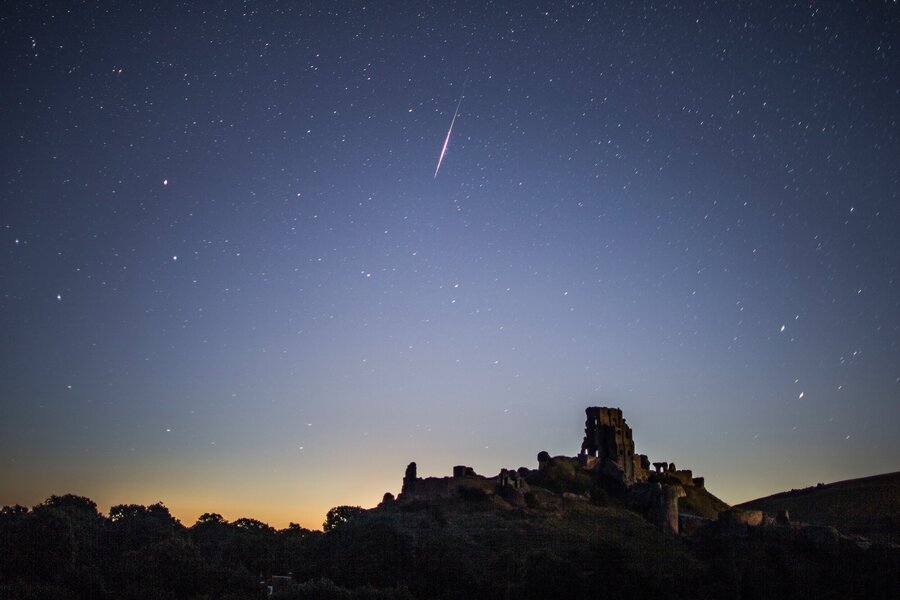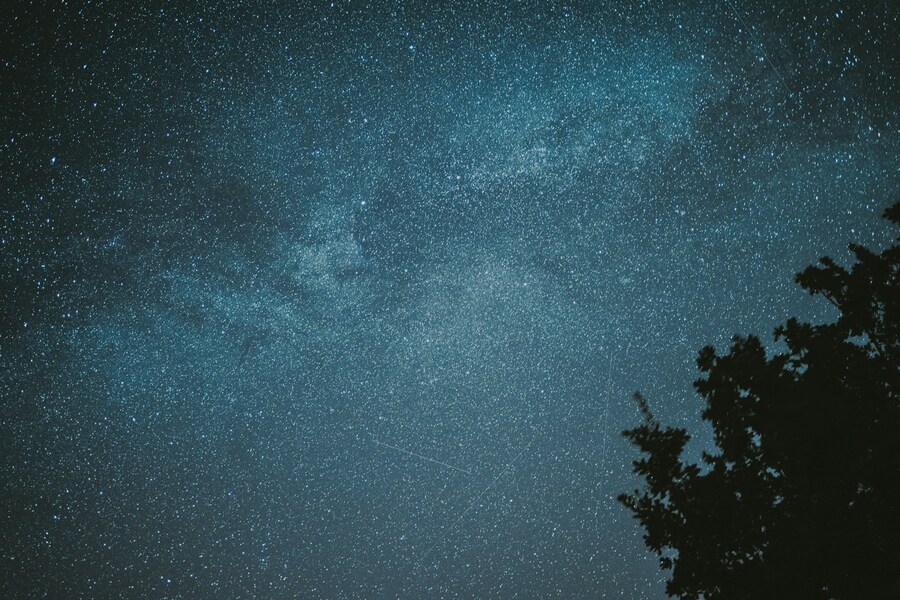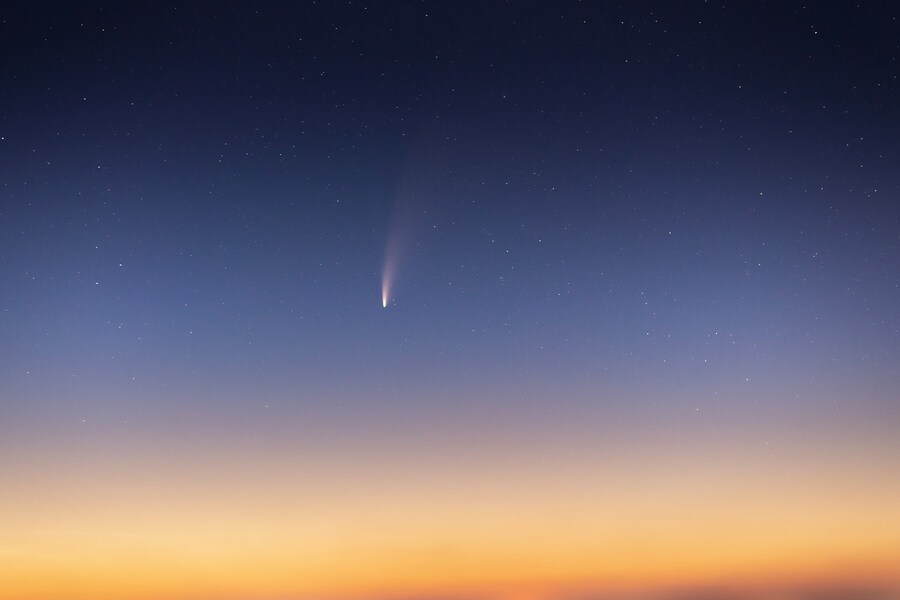If you're searching for a reason to step outside, unwind, and gaze at the night sky, meteor showers are the perfect excuse. These celestial events offer a unique opportunity to disconnect from daily routines and immerse yourself in the wonders of the universe. With clear skies and a bit of patience, you can witness some of nature's most spectacular displays. Below, we've compiled a list of nearly a dozen meteor showers to look forward to in 2025. Mark your calendars, grab a cozy blanket, and prepare to be amazed by these cosmic fireworks. Understanding the interplay between meteor showers, their radiant points, and lunar phases is key to maximizing your viewing experience. Each shower's radiant point, the constellation from which meteors appear to originate, guides your gaze. Moreover, the moon's illumination significantly impacts visibility; a dark, moonless night offers the clearest view, while a bright moon can obscure fainter meteors. By knowing these factors, you'll be well-equipped to witness the awe-inspiring spectacle of these celestial light shows. Let's gaze skyward!
Halley's Comet and more: how many meteor showers can you catch in 2025?
 Source: Google Search
Source: Google Search
April 17-26: The Lyrid meteor shower
- Peak: April 21-22
- Moon impact: Medium
The Lyrids are one of the oldest-known meteor showers, with records dating back 2,700 years. On average, this shower produces 10 to 20 meteors per hour during its peak. While it's best viewed in the Northern Hemisphere, those in the Southern Hemisphere might also catch a glimpse. For optimal viewing, head outside during the darkest hours before dawn. A helpful tip: locate the star Vega, one of the brightest stars in the night sky, which is part of the constellation Lyra. Vega serves as the radiant point for the Lyrids, making it easier to spot these dazzling fireballs.
April 15-May 27: The Eta Aquarids shower
- Peak: May 4-5
- Moon impact: Low
The Eta Aquarids are a result of debris left behind by Halley's Comet. This shower is visible in both the Northern and Southern Hemispheres, with peak rates of 10 to 50 meteors per hour. The meteors are known for their speed, traveling at approximately 40.7 miles per second, and often leave glowing trails that linger for several seconds. While the Southern Hemisphere typically enjoys a better view due to the higher position of the radiant point (the constellation Aquarius), early risers in the Northern Hemisphere can still catch a stunning display before dawn.
July 7-Aug. 15: The Alpha Capricornids meteor shower
- Peak: July 30-31
- Moon impact: Low
Originating from Comet 169P/NEAT, the Alpha Capricornids offer equally impressive views in both hemispheres. The shower peaks on July 30, coinciding with a waxing crescent moon that's only 27% full. This minimal lunar interference ensures dark skies, making it easier to spot Earth-grazing fireballs. To maximize your experience, look toward the constellation Capricornus, the radiant point of this shower.

Source: Maëva Vigier/Unsplash
July 18-Aug. 12: The Southern Delta Aquariids meteor shower
- Peak: July 29-30
- Moon impact: None
The Southern Delta Aquariids are best viewed in the Southern Hemisphere and the southern latitudes of the Northern Hemisphere. This shower produces around 25 meteors per hour at its peak, though the meteors are generally faint and can be challenging to spot in areas with light pollution. However, the moon sets early on the peak evening of July 29, creating ideal dark sky conditions for those in rural or remote locations.
July 17-Aug. 23: The Perseids meteor shower
- Peak: Aug. 12-13
- Moon impact: High
The Perseids are one of the most anticipated meteor showers of the year, known for their impressive peak rates of 50 to 75 meteors per hour. Unfortunately, the 2025 peak coincides with a waning gibbous moon, which will be 86% illuminated. This bright lunar phase will obscure all but the brightest fireballs. However, if you're in a dark sky location, you might still catch a remarkable show. Look toward the constellation Perseus to find the radiant point of this celebrated shower.
Oct. 6-10: The Draconids meteor shower
- Peak: Oct. 8
- Moon impact: High
Unlike most meteor showers, the Draconids are best viewed just after nightfall, making them a convenient option for those who prefer not to wake up early. This shower originates from debris left by Comet 21 P/Giacobini-Zinner and typically produces 8 to 10 meteors per hour. However, a full supermoon on October 8 will likely outshine all but the most spectacular fireballs. Despite this, the Draconids are known for occasional outbursts, so it's worth keeping an eye on the sky just in case.
Oct. 2-Nov. 12: The Orionids meteor shower
- Peak: Oct. 21-22
- Moon impact: None
The Orionids, another shower born from Halley's Comet, are known for their bright meteors. While the peak rate is modest at 10 to 20 meteors per hour, the 2025 shower coincides with a new moon, ensuring exceptionally dark skies. For the best viewing experience, look toward the constellation Orion between midnight and dawn.

Source: Google Search
Oct. 13-Dec. 1: The Taurids meteor shower
- Peak: Nov. 4-9
- Moon impact: High
The Taurids consist of 2 debris streams: the South Taurids (peaking on November 5) and the North Taurids (peaking on November 9). These showers are known for their slow-moving, bright meteors, some of which may even qualify as fireballs. However, a nearly full moon during the peak will obscure most shooting stars. To spot the Taurids, look toward the constellation Taurus in the early morning hours.
Nov. 3-Dec. 2: The Leonids meteor shower
- Peak: Nov. 16-17
- Moon impact: Low
The Leonids are famous for their rare but spectacular meteor storms, such as the one in 1966 when thousands of meteors lit up the sky every minute. While such events are uncommon, the 2025 shower is expected to produce 10 to 15 meteors per hour. A waning crescent moon (9% illumination) will provide minimal interference, making it easier to spot even faint meteors.
Dec. 1-21: The Geminids meteor shower
- Peak: Dec. 12-13
- Moon impact: Low
The Geminids are often considered the best meteor shower of the year, with peak rates of 100 to 120 meteors per hour. In 2025, a late-rising waning crescent moon will ensure dark skies, offering ideal viewing conditions. The meteors radiate from the constellation Gemini, but can be seen anywhere in the night sky.
Dec. 16-26: The Ursids meteor shower
- Peak: Dec. 21-22
- Moon impact: None
The Ursids close out the year with a modest display of 5 to 10 meteors per hour. However, this shower is known for occasional outbursts, with rates skyrocketing to 25 to 100 meteors per hour. A waxing crescent moon (2% illumination) will provide excellent viewing conditions. Look toward the constellations Ursa Major and Ursa Minor to spot the radiant point.
Plan your meteor shower experience with our booking platform – ParkingNearAirports.io!
 Source: Daniil Silantev/Unsplash
Source: Daniil Silantev/Unsplash
If you're planning to travel to a dark sky location to witness these celestial events, consider using ParkingNearAirports.io to find affordable economy parking options near your departure airport. Our smart booking platform helps you compare parking fees at airport lots and secure the best deals, ensuring an stress-free start to your trip. In addition, many airports offer a shuttle lot for budget-conscious travelers, providing convenient transportation to the terminal.
By combining the magic of meteor showers with the practicality of efficient travel planning, you can make the most of these unforgettable celestial experiences. Happy stargazing!






